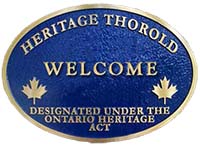What is a Municipal Heritage Committee / LACAC?
When the Ontario Heritage Act was first enacted in 1974, these committees were called LACAC’s (Local Architectural Conservation Advisory Committees). Since the work of these committees has been expanded to include built, cultural and natural heritage, the original name no longer seemed appropriate. These committees are appointed by Municipal Councils to give advice on the matter of heritage within their communities. Every day across Ontario volunteers work to conserve and celebrate the stories, places and events of the people who shaped our communities.
Under the Ontario Heritage Act, municipalities can establish Municipal Heritage Committees to advise council on identifying, protecting and promoting cultural heritage resources that make our communities unique and sustainable places to live. The fact that so much of Ontario’s rich heritage has been conserved is a testament to the good advice and hard work of Municipal Heritage Committees (MHC). Establishing a MHC is often described as a municipality’s first and most important step in engaging its community in heritage conservation.
Committee members build strong relationships with property owners to encourage good stewardship of heritage resources. They facilitate the exchange of ideas and expertise that contribute to the economic and cultural development of our cities, towns, villages, neighbourhoods and landscapes across the province. They also bring unparalleled passion and dedication to finding solutions towards heritage conservation.
(Ref. – Ontario Heritage Tool Kit – Ontario Ministry of Tourism and Culture)
Heritage Thorold LACAC researches and examines the history and/or architecture of a candidate for designation to determine if it meets the criteria set forth by the Ontario Heritage Act.
We actively promote heritage conservation within communities and advise property owners on appropriate conservation and maintenance practices.
OUR MISSION
Heritage Thorold LACAC is committed to the identification and preservation of buildings, structures and lands that are of cultural and/or historical value or interest and to initiating and promoting a conservation ethic and a climate of responsible stewardship of the community’s cultural heritage assets.
